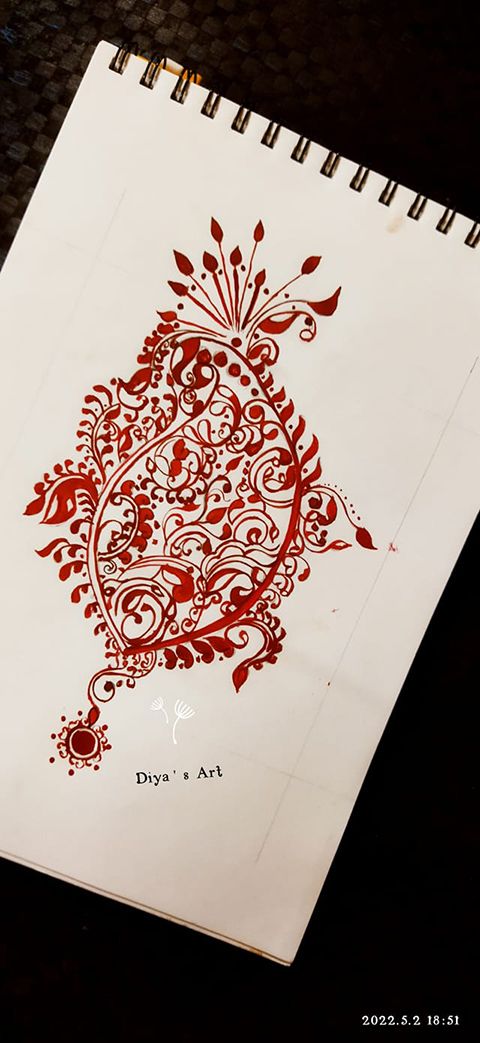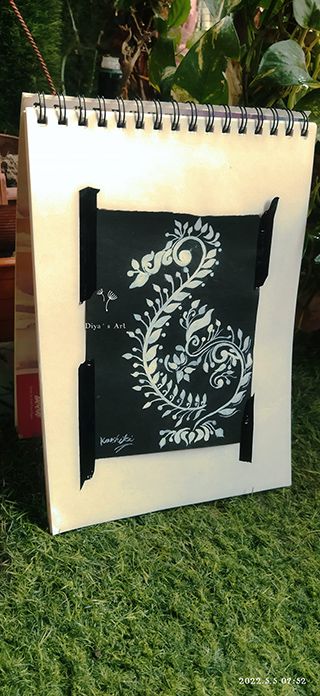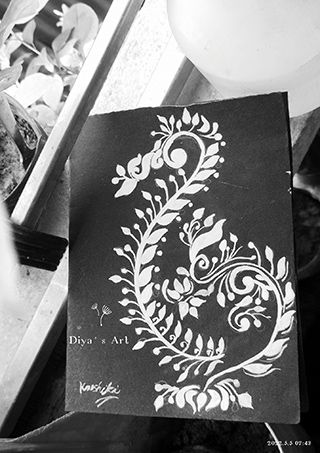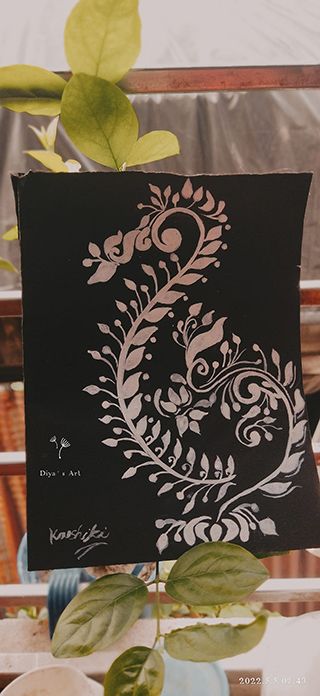Alpona Design by Koushiki Maity (Diya)
Alpana or alpona (Bengali: আলপনা) is a South Asian folk art style, traditionally practiced by women, and consisting of colored motifs, patterns, and symbols that are painted on floors and walls with paints made from rice flour, on religious occasions.
It is common to the Bengal region in India, and in Bangladesh. Amongst Hindu families, alpanas may contain religious motifs with symbolic designs that relate to religious austerity, festivals, and specific deities. Amongst Santal tribal communities, alpanas often contain geometric or symbolic patterns drawn from nature. Although traditionally the domain of rural women, Alpana motifs have been very influential in modern Indian art, and are incorporated into the works of artists such as Jamini Roy, Abanindranath Tagore, Devi Prasad, and in the early illustrations of film-maker Satyajit Ray. In contemporary Bengal, alpanas are created as part of religious festivals such as the Durga puja, in public and private spaces.1
Today our Facebook Follower Koushiki Maity (Diya)* shares her latest Alpona Design which as you can see below is exquisite.

Here are some more views of Koushiki's work.



If you are a Facebook user you can follow Koushiki by clicking here. And you might like to check out her video below.
Sudhi Ranjan Mukherjee, who is rightfully credited with many as the person responsible for revival of alpona, says he saw his mother drawing alpona with rice paste with fingers only.2
"The symbolic motifs such as footprints of Lakshmi, spiral and so on, but I was not very much attracted to it. I understood that I had nothing to do with those limited motifs. Later when I came to Santiniketan, I was spellbound seeing the alponas there. The compactness and fluency of lines enchanted me. The alponas there were much more refined and creative," he remembers.2
"The motifs were created from nature. The flow and ornamentation also came from the decorative sculptures of Indian temples, specially the South Indian temples." He says the rhythmic improvisation of the ornamental designs were the main specialty of Nandalal Bose’s alpona. With his artistic excellence he used to improvise and transform even the minutest form of nature into a rare form of ornamental design, or alpona with the addition of beautiful ornamentation from creepers. With his special artistic imagination, he beautifully ornamented the lotus leaves and flower which may not be found in actual nature.2
Moreover, the sculptures and ornamental designs of the South Indian temples found a wider expression in Santiniketan’s alpona with an extra aesthetic beauty and an extra game of improvisation for an artist’s imagination. This is just like the melodic improvisation of a raga which gives birth to new melodies and rhythm.
@sudhiranjanmukherj 2

© Thank you to Koushiki Maity who kindly gave permission for the images of her work to be shared on AnArt4Life.
Credits
1. en.wikipedia.org
2. artsoullifemagazine

